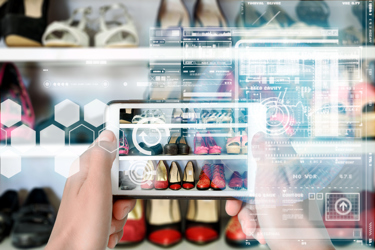5 CX Design Strategies That Breathe New Life Into Retail
By Beverly Vaters, VP and Creative Director, Creative at Jackman

This past pandemic year has greatly accelerated consumers’ growing preference for e-commerce and direct-to-consumer delivery models. While there is no question that digital-first is here to stay, physical stores are still key for customer engagement and overall brand experience. As vaccination rates increase and the world begins to open, stores can and should be a destination for discovery, inspiration, and connection.
The store remains a vital physical representation of your brand’s DNA and values. Retailers need to use this space to provide shoppers with a unique experience that can help serve as a key differentiator to ensure their brand stands out above the competition. To thrive, brands must continually reinvent their retail spaces for maximum consumer impact. Here are some things to keep in mind:
1. Bring Your Brand To Life In A Distinctive Way
Beyond your digital brand touchpoints—such as your website and social media platforms—your store also needs to highlight your brand’s unique DNA and personality in a way that inspires your customers. Sneaker designer Ronnie Fieg—who is known for his collaborations with brands like Adidas, Asics, Converse, New Balance, and Nike—provides a great example. His brand Kith is based on the concept of ‘kith and kin’—friends and family—so it’s fitting that he ties his brand back to his own experiences. As a kid, his parents wouldn’t let him eat sugary cereal—so as a young entrepreneur, he sold his homemade lunches and used the money to treat himself to the sweet cereals he craved. He’s kept this notion alive within his Kith stores, where he not only carries an impressive on-trend selection of athletic footwear, but he also serves up Kith Treats—a bar with 23 types of breakfast cereal. Now Fieg and his customers can indulge with a treat while they indulge their feet.
2. Go Beyond Products And Create Connections
Consumers will likely already know some of the functional benefits of your products from your website. Use your physical store to go beyond just products and provide a place where the customers and brand can connect over a shared passion. As your employees are also your brand ambassadors, they can further engage with your customer by matching their passion. Lululemon’s 25,000 square-foot experiential store in Lincoln Park, Chicago does just this. It not only sells yoga, running, and training items for those living the ‘sweatlife’, but it pushes beyond products and provides a space that inspires their ‘sweatlife’ community connection with yoga studios, a meditation space, a healthy café for juice and food, plus areas for community gatherings. This creates dynamic spaces within the store where brand ambassadors and consumers with common interests can interact and connect. It’s not just about buying stuff to help you do the things you do—it’s also about connecting with a like-minded community of people that share your interests.
3. Balance Form And Function
We may never settle the form versus function debate, but great customer experiences combine the perfect balance of both. Consider the On flagship store in New York's NoHo neighborhood, which is not only aesthetically well-designed with a modern, organized grid fixture system—it also uses interactive human-centered technology to completely personalize the customer journey. In a three-second run on the open floor in the store, hidden gait-cycle analysis technology compares your running style with a database of more than 50,000 runs and their entire shoe offering. Combined with a custom-built invisible foot scanner with depth cameras to find your fit—they match the perfect shoe just for you. To add to the experiential benefits, their Magic Wall lights up to highlight three footwear models that fit your custom profile. With the simple flip of a hidden switch, one of the compartments opens for staff to gain access to the stashed stock of 173 available shoe models. This not only keeps constant customer contact with speed of delivery, but it’s also efficient for keeping the sales floor clear. Think of ways you can use relevant technology and innovation to add value to your in-store customer experience.
4. Create Relevant And Convenient Solutions
These days, consumers are looking for even more convenient ways to shop. Current circumstances have resulted in a heightened discomfort with spending prolonged time inside the store. With this in mind, brands have been extending their retail footprint by making use of as much of their outside space as possible by offering sidewalk sales (weather permitting) and providing curbside pickup. To further this notion, the eyewear brand Ace & Tate installed a convenient vending machine built into the exterior of its London store. Passersby can check out their stylish frames and make a purchase, even when the store is closed. This not only provides a quick shopping experience but extends the retail operations for 24/7 instant access. Consider other ways to extend your retail space to showcase products, create additional sales channels, or provide unexpected shopping solutions for your customers.
5. Experiment With Experience
As we’ve learned this past year, things change quickly. It’s important to be nimble and try new ways to ensure your brand is meeting the ever-changing demands of your consumer. Don’t be afraid to use the store as a testing and learning lab for experiential elements. This testing ground also can provide customer insights on how to modify concepts until they best reflect your strategic goals. For maximum consumer impact, retailers must continually reinvent their retail spaces to ensure they remain relevant and truly connect with their evolving customer needs.
The death of brick-and-mortar stores has been announced many times over the years and yet it is still not upon us. We believe that our new normal is emerging and it will absolutely include in-person shopping, but the design of stores needs to evolve to focus not just on purchasing but on providing a unique, relevant (and safe) experience for customers to discover, connect, and be inspired.
